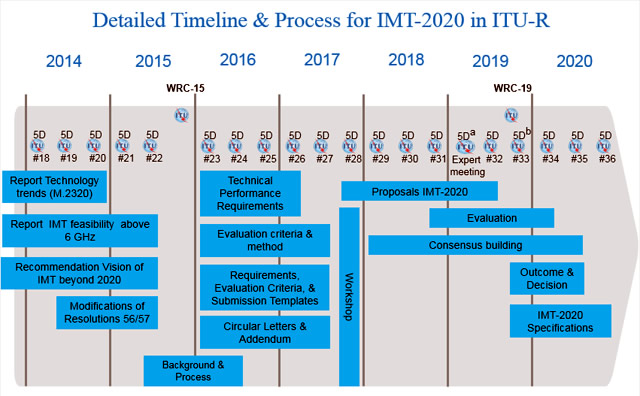Everything you need to know about the ITU and 5G standards

Before 5G can begin rolling out to the public from 2020, standards for the next-generation mobile network need to be agreed upon. One particular agency is taking a prominent role in formulating these standards.
Here’s everything you need to know about the ITU and where it is with producing a definitive 5G standard.
What do we mean by 5G standards?
When we talk about 5G standards, we mean a wide-ranging set of rules, attributes and collectively endorsed technologies that will define 5G networks around the world. Such a consensus is necessary in order to avoid a fragmented 5G environment.
These standards will ensure a certain level of performance from 5G networks, as well as a degree of compatibility when travelling across distinct 5G territories. They will also enable chip and smartphone makers to produce devices that will work on those 5G networks.
There is no single ‘5G standard’ yet
You will often see mention of a singular ‘5G standard,’ and this tends to refer to the core network technology that will define 5G in much the same way as LTE has come to define 4G.
Put simply, there is no set-in-stone 5G network technology standard as yet. A range of 5G network standards (including the incorporation of LTE itself) are still being discussed by the various regulatory bodies, network operators, and other interested parties.
What is known is that this 5G standard will involve high-band spectrum, which is much less congested than currently used low-band spectrum, and thus will be able to handle the exponentially higher data load that’s expected over the next decade or so.
In the UK, Ofcom will be auctioning off 190 MHz of spectrum in the 2.3 GHz and 3.4 GHz bands to British network operators in 2017. The latter frequency in particular is expected to be central to the rollout of 5G across Europe.
These frequencies had previously been allocated by the ITU, which is taking the lead in establishing an international 5G standard.
What is the ITU?
The ITU is the International Telecommunication Union. This is the Geneva-based United Nations specialised agency for information and communication technologies.
It coordinates the shared global use of the radio spectrum and assists in the development and coordination of worldwide technical standards. As such, it is leading the effort to produce a 5G standard.
What work is the ITU doing on 5G standards?
Back in 2012, the ITU launched the IMT–2020 roadmap for research into 5G - IMT–2020 being the ITU’s official name for 5G. In 2015, the ITU’s World Radiocommunication Conference came up with three spectrum bands which will be used for 5G. Then, in March 2016, the ITU refined the criteria for the selection of 5G radio interface technologies.
More recently, on December 13 2016, the ITU announced that its special focus group had concluded a preliminary study into the standards necessary to meet 5G’s performance targets.

This ITU-T Focus Group has submitted five draft ITU international standards and four draft ITU technical reports to outline the requirements of all major parties involved with IMT–2020.
The draft ITU international standards are labelled as follows: Requirements of IMT–2020 from network perspective, Framework for IMT–2020 network architecture, Requirements of IMT–2020 fixed mobile convergence, IMT–2020 network management requirements, and Network management framework for IMT–2020
Meanwhile the draft ITU technical reports include: Application of network softwarisation to IMT–2020, Unified network integrated cloud for fixed mobile convergence, Application of information centric networking to IMT–2020, and Terms and definitions for IMT–2020 in ITU-T.
These draft 5G standards are now in the process of being edited before submission to the ITU’s future network standardisation expert group, Study Group 13, for further consideration.
When will the ITU have a final 5G standard ready?
The ITU doesn’t anticipate having a draft of the 5G standard ready until towards the end of 2017 or early 2018. A definitive, finalised 5G standard probably won’t be agreed upon until mid–2019 - not long before 5G’s expected 2020 rollout.
50% off Lyca Mobile’s Pay As You Go plans
Lyca Mobile’s cheap Pay As You Go deals include roaming and international minutes.











